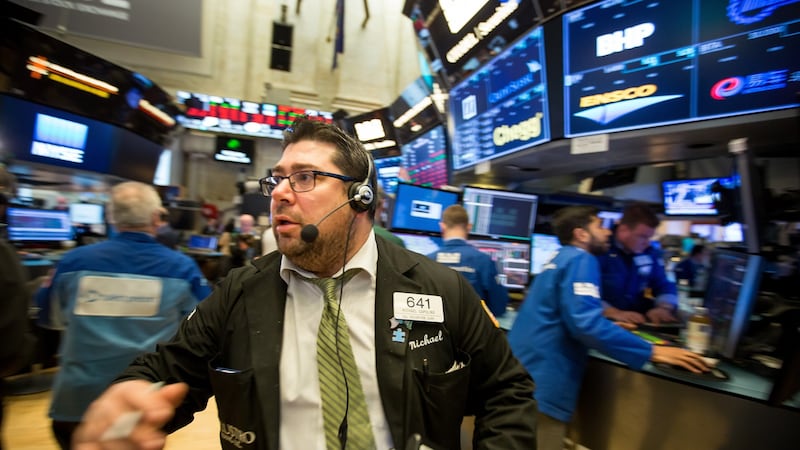Anyone curious about what a world run by robots might look like should take a glance at the current gyrations in stock markets. It might seem like old-fashioned market volatility, but the recent turbulence has new and worrying drivers.
During the great financial crisis we got used to jargon such as “collateralised debt obligations”, or CDOs, which referred to the weird financial instruments at the heart of an unsustainable boom in US property prices and hugely overextended (global) banks.
The financial system has moved on since then, and the sharp stock-market falls are likely to be pinned on yet more strange-sounding Wall Street inventions. We can now buy and sell shares in every listed company in the world at the touch of a button: all of them, at the same time, with a single click. We can also bet on how quickly those shares will move up and down. It’s like betting on the speed of each horse in a race rather than gambling on which one will win. Investing it is not. We can also easily borrow enough money to place very large bets, should we so wish. But “we” aren’t really doing it. Robots are.
Seen in this light, the recent ups and downs of global stock markets shouldn’t be much for real people to worry about. There isn’t much of a read across from the Dow Jones index to what’s happening in the economy. When the dust settles the casualties will be revealed: with luck, just a few professional speculators – and owners of robots – who should have known better.
It's as if the trillions of dollars, pounds, yen and euro printed by the monetary high priests froze in the system to became a great cash iceberg. The worry is that it is starting to melt
But there is always a but. Stock markets had been on a mighty climb until the recent sell-off. The obvious driver of higher equity prices was an unexpected spurt in global economic growth. We might quietly describe the world economy right now in terms of a boom. In the short term anything and everything drives stock markets, but in the long run the only two things that matter for equities are growth and government-bond yields.
Bonds again: we became familiar with these during our own financial crisis, when everyone (apart from the people who make the decisions) wanted to burn the bondholders. Bonds have been at the heart of a near decade-long experiment by central banks everywhere. Trillions of dollars, pounds, yen and euro have been printed by the monetary high priests. The way they chose to shower us with their munificence was not to send each of us a cheque (a far more effective way to stimulate a boom) but to buy government bonds with newly minted cash. The great mystery has been why all that printing of money didn’t generate much economic growth or any inflation.

It’s as if all that money entered the system and then instantly froze. The resulting cash iceberg just kept growing. The worry is that it is starting to melt. “Liquidity” is finding its way into the global economy and is having the usual effects: growth is picking up. That’s what stock markets reacted to last year. Economic growth usually means healthy profits. Most recently, however, something far more sinister has emerged: inflation. A merest hint that US wage growth has finally resumed sent those all-important bond markets into a mini panic. It took a while, but stock markets eventually took notice. Normally, when bond yields go up stocks have to fall. Normal service seems to have been resumed.
Robots are trading between themselves, inventing new ways to bet, buy, sell and borrow. Some of us are left feeling queasy that nobody is in control of the financial system
Old-fashioned relationships between bonds and equities have been mixed with the rise of algorithmic trading and new financial instruments . Human beings used to trade CDOs. Now it’s robots trading between themselves, inventing new ways to bet, buy, sell and borrow. All without a person in sight. Nobody really knows how all of this works. Some of us are left feeling queasy that nobody is in charge – or control – of the financial system. Chaos might just be the natural outcome of what we have built over the past decade.
Trump’s tax cuts added fuel to the fire: yet more trillions of dollars, this time via the fiscal arm of government. It’s not supposed to be like that: huge stimulus of the economy with more borrowing at a time of full employment risks inflation. And higher bond yields. Wage growth could be the result.
If wages are picking up it is something for everyone – even Wall Streeters – to celebrate. Inequality, the scourge that lies behind the rise of Trump, Brexit and populism, can be reduced only if wages rise at the expense of profits. Equity markets won’t like that, but in the long run even shareholders might concede that political stability is worth the price of paying workers more.
It might be a whiff of inflation leading to the end of the era of low interest rates. It could be a chaotic, unmanaged and uncontrollable financial system. Equity investors have to wake up to the idea that they will be caught in algorithmic crossfire. Stock markets had run ahead of what the global economy is likely to deliver, even if it is now growing strongly. That global growth is one reason for proper investors to remain calm – for now. The world economy is in great shape, but it won’t stay that way if chaos is the new financial order.











